This is the fifth of seven posts covering all of the ideas generated at the Somerville by Design: Davis Square Design Charrette that was held September 9-11, 2013. We have numbered all of the images so that it is easier to reference them when providing feedback.
You can send us feedback two ways: first, you can discuss a specific idea online by leaving a comment at the bottom of this blog post. Second, you can provide feedback using a feedback form that you can download (Pin-Up Feedback Form) and mail back to us using the address below. The form is designed to facilitate feedback for all of the ideas generated (over 45 in total) and should be used for all of the forthcoming blog posts, not just this one.
Mayor’s Office of Strategic Planning and Community Development
c/o Somerville by Design
93 Highland Ave.
Somerville, MA 02143
All of the images on this post can be downloaded as a .pdf here: Pin-Up Ideas 5
Coordination between private businesses and property owners, government agencies, and local nonprofit or advocacy groups is a key to creating and sustaining a vibrant business district. The Somerville by Design: Davis Square process has succeeded in getting many of the right people in the room together to plan for the future, but a formalized, representative organization may be needed to take the lead on implementing many of the ideas. The following three slides visually illustrate activities that might be best managed by a new district management organization.
Two organization models might be considered in Davis Square: a Main Streets organization, and a Business Improvement District. Both models are considered national best practices, and local examples are successfully operating in Somerville and around Boston. Each is discussed below:
Concept 25: Main Street Organization
The Main Streets Organization (MSO) model was developed by the National Trust for Historic Preservation in 1977. Background information can be found at this link. MSO’s are community development organizations that work with business owners, property owners, and interested residents to enhance the Square. These organizations typically have an Executive Director on staff and a volunteer Board of Directors. Events frequently rely on volunteer-driven efforts. In Somerville, two Main Streets organizations currently exist, serving Union Square and East Somerville. Twenty individual Main Streets districts operate within the City of Boston.
There are several ways to fund a Main Street Organization: municipal budget appropriations, federal Community Development Block Grant (CDBG) funding, District Improvement Financing (DIF), and local Enterprise Funds. Some are more viable than others. CDBG funding is not currently likely in Davis Square, since federal eligibility standards require an area to meet specific income levels among residents. Municipal budget appropriations would likely require prioritization of funds away from another program. District Improvement Financing would take a percentage of future property tax increases from the Square to fund the Main Street Organization. Lastly, an Enterprise Fund would create a new revenue stream (using defined sources like sales tax, or fees from parking) that fund the Main Street Organization.
Concept 26: Business Improvement District
Business Improvement Districts (BID) are non-profit or quasi-government organizations that were developed in the 1970’s as a way to spur economic development in vacant city centers. They are similar to MSO’s in that they have an Executive Director on staff and a Board of volunteers comprised of business owners, property owners, and interested residents.They can also be supported by City Staff. Somerville does not currently have any BIDs, but communities as diverse as Springfield, Northampton, Hyannis and Boston have utilized this organizational model.
There are a few ways to fund a Business Improvement District: an added tax in a mapped area, District Improvement Financing (DIF), and Enterprise Funds. The added tax assesses property owners within a specific area. This tax assessment is kept separate form the municipality’s general fund, and is only used to fund the BID. The DIF and Enterprise Funds would function as described in Concept 25.
To establish a BID, businesses in the area need to petition the City to create the BID. The City then determines that a majority of businesses in Davis Square want the BID. Lastly, the City enacts legislation through the Board of Alderman creating the BID.
Services performed by Business Improvement District organizations can include maintenance (waste management, sidewalk cleaning, rodent control, landscaping); marketing (district branding; event management, wayfinding and signage); parking management (pricing strategies, shared-use arrangements, valet services); and even economic development technical assistance (storefront improvements, business recruitment and tenant-landlord matching).

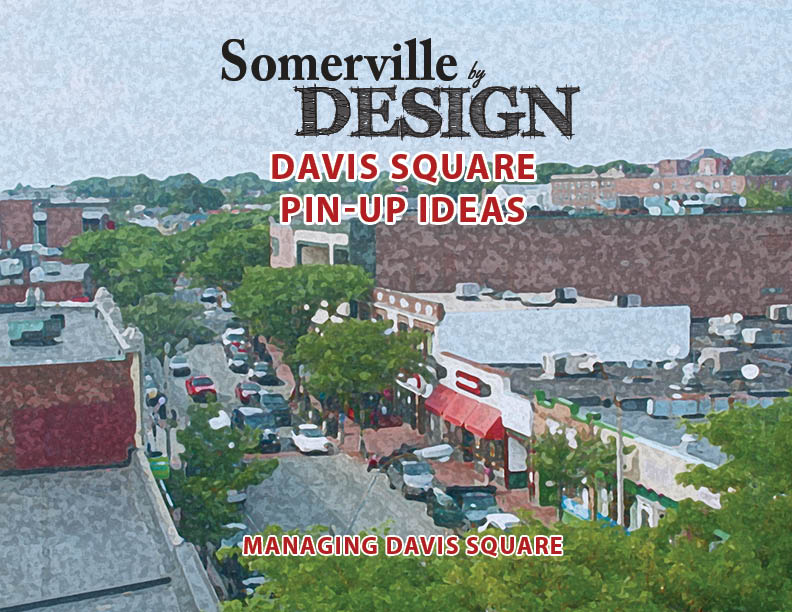
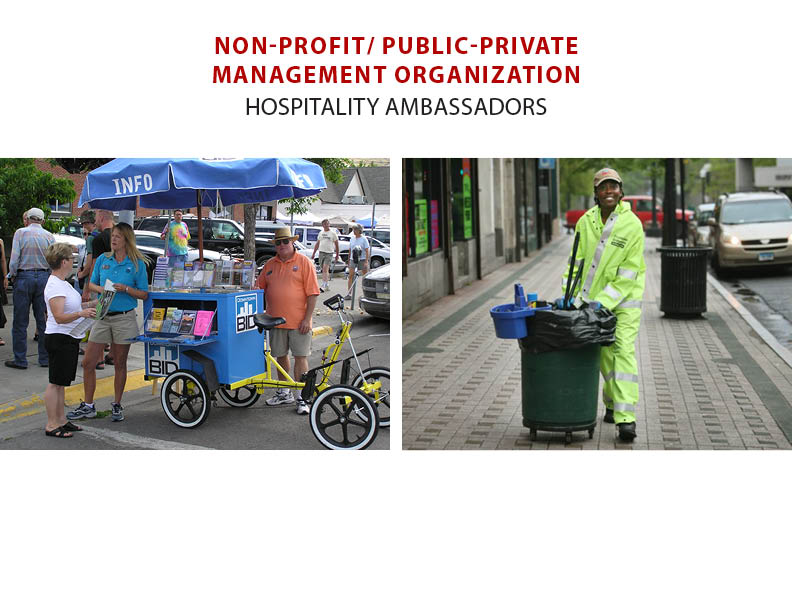
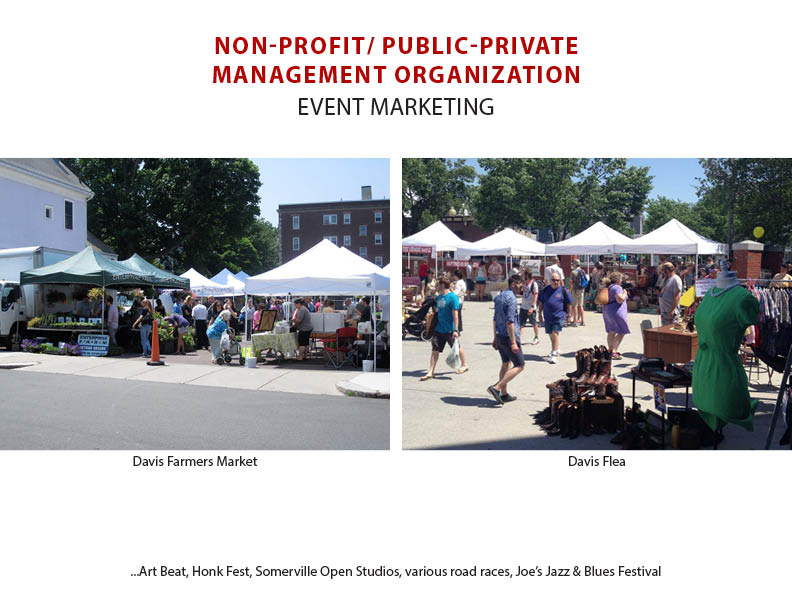
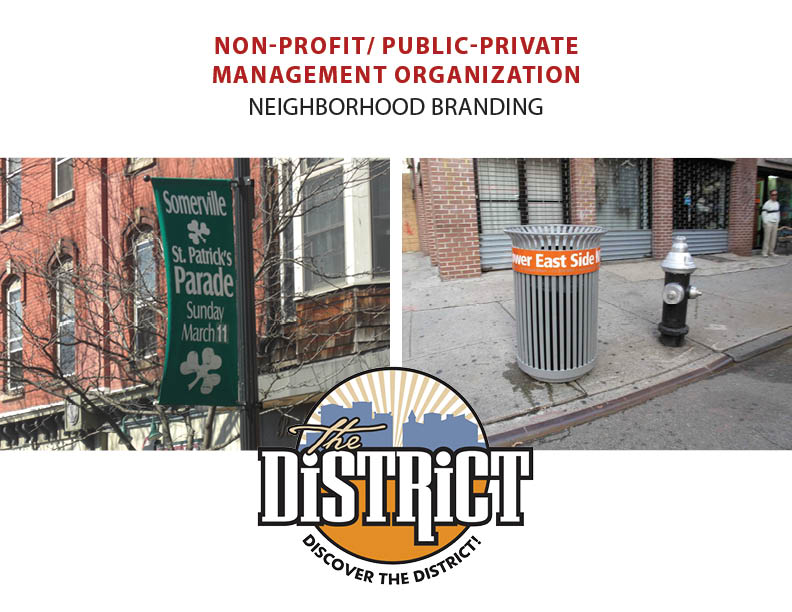
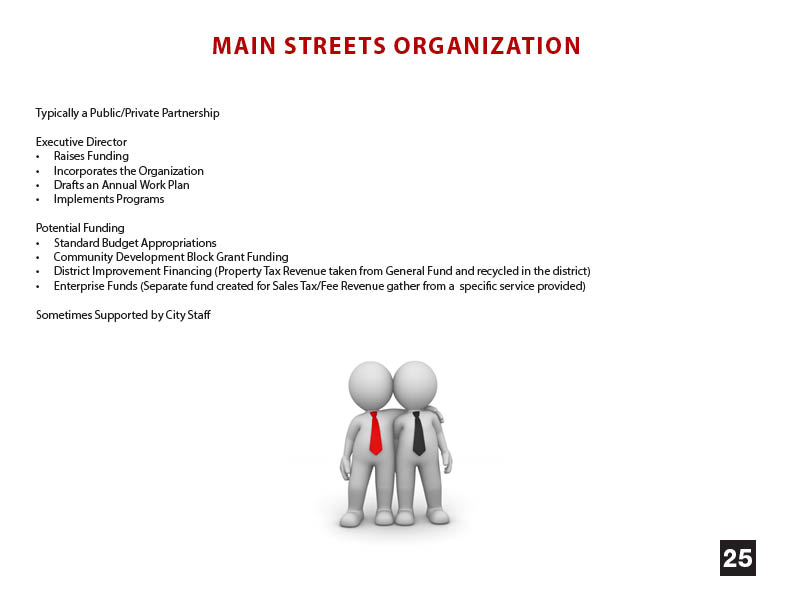
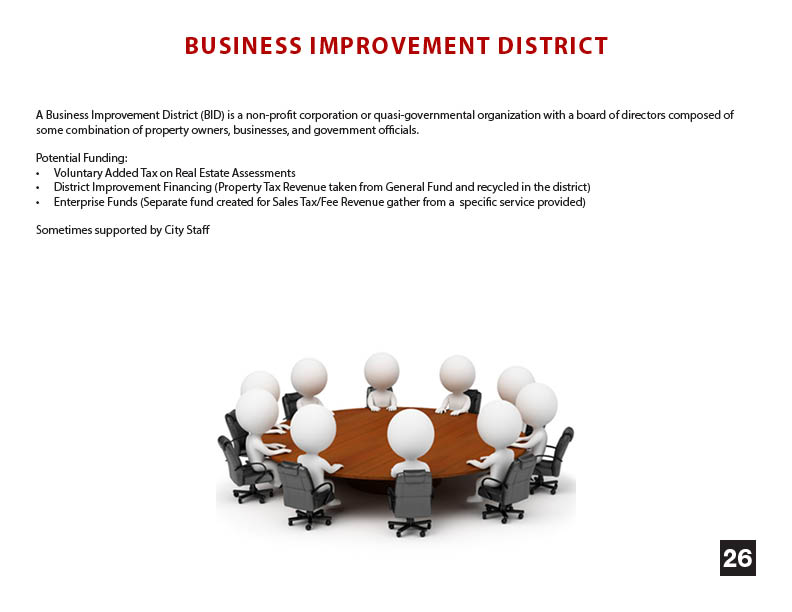
Lee Auspitz
Lee Auspitz
OSPCD